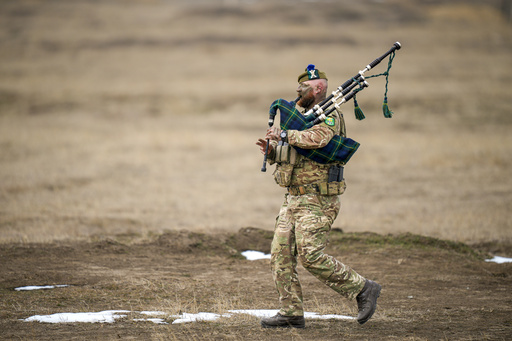
SMARDAN, Romania — NATO members are currently engaged in their largest military exercises of 2025, which are being held in Romania near the Ukrainian border. These drills are designed to evaluate the alliance’s capability to quickly deploy substantial forces along its eastern front amid rising concerns about the reliability of the United States, the military bloc’s most influential member.
The ongoing exercises, identified as Steadfast Dart 2025, involve nearly 10,000 troops from nine nations and are part of NATO’s new Allied Reaction Force. Taking place over a span of six weeks, these drills are being held across Romania, Bulgaria, and Greece at a critical moment, just days before the anniversary of Russia’s extensive invasion of Ukraine. Europe, feeling rattled by recent changes in U.S. defense policy under President Donald Trump, has been urged by Defense Secretary Pete Hegseth to significantly increase military spending while hinting that American security interests are shifting.
While the Trump administration has not explicitly stated intentions to withdraw U.S. forces from Europe, Hegseth’s comments about the necessity for European nations to “lead from the front” have left NATO allies contemplating possible changes in the security dynamic, which traditionally relied on the U.S. nuclear deterrent. Radu Tudor, a defense analyst in Bucharest, expressed that a reduction in U.S. military presence would empower Russian President Vladimir Putin and weaken NATO’s eastern borders, compelling Romania to seek additional support from other NATO allies to replace the U.S. troops.
Adm. Stuart B. Munsch, who heads the Allied Joint Force Command, remarked that threats to NATO have become both complicated and unpredictable over the last decade. He emphasized that NATO has made significant advancements in its defensive capabilities that have transitioned from theoretical concepts into actionable plans, asserting that the current exercises are a reflection of these efforts aimed at safeguarding every member country.
Concerns have also been raised among European allies about being excluded from discussions between Washington and Moscow, focusing on potential resolutions to the ongoing conflict in Ukraine. In response to the rapid developments, the President of France has organized a meeting with select EU nations and the United Kingdom for discussions in Paris this week.
During the combat exercises in Romania, participants engaged in live-fire training and simulated trench warfare. Last week’s drills in Greece saw Greek and Spanish Marines conduct a mock amphibious assault as part of their training. The newly formed Allied Reaction Force, established in July, aims to mobilize within ten days using a combination of traditional military resources and advanced cyber and space technologies, with the United Kingdom providing leadership by contributing 2,600 troops and 730 vehicles.
This joint operation includes participants from Romania, Bulgaria, France, Italy, Slovenia, Spain, and Turkey, encompassing 1,500 military vehicles, over 20 aircraft, and more than a dozen naval assets. In the wake of Russia’s full-scale invasion of Ukraine on February 24, 2022, NATO enhanced its military presence along Europe’s eastern front by deploying additional multinational battlegroups in Romania, Hungary, Bulgaria, and Slovakia.
Since then, Romania has emerged as a critical player in NATO. The country has provided support to Ukraine by supplying a Patriot missile system and has established a training hub for F-16 pilots from allied nations, further solidifying its role within the alliance.

